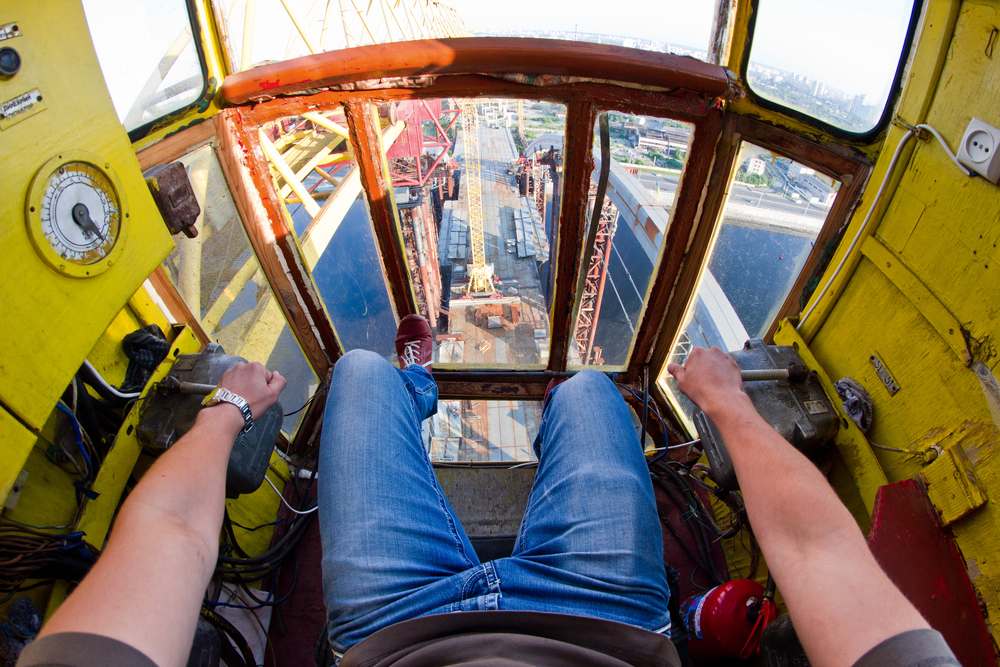Tower Cranes: How do They Work?
7 October, 2020 - Editorial Team
Tower cranes are a common feature at any big construction site. They are impossible to miss as they rise very high in the sky. They are a vital component in the construction of tall buildings and massive structures and are also used in the development of substantial complex buildings. Tower-cranes are designed to handle heavy equipment and at great heights. They have to be carefully designed and very strong to avert any accidents that may occur in the process.
What is a Tower Crane?
It is among the highest cranes in the entire world. Its height surpasses typically that of the structure that it assists in constructing. It is usually a fixed crane that is mounted on-site. The crane has a horizontal boom that lifts the weights and it is supported by a vertical metallic mast. The horizontal boom can rotate at an angle of 360 degrees.

Main Tower Crane Components:
A base that supports the crane.
Mast: the main supporting tower of the crane. It is made of steel trussed sections that are connected together during installation. It is supported by the base.
Slewing Unit: the slewing unit sits at the top of the mast. It is attached to the mast, This is the engine that enables the crane to rotate.
Jib: the jib, or operating arm, extends horizontally from the crane. A “luffing” jib is able to move up and down; a fixed jib has a rolling trolley that runs along the underside to move goods horizontally.
Counter Jib: holds counterweights (Large concrete counterweights are mounted toward the rear of the counterdeck, to compensate for the weight of the goods lifted), hoist motor, hoist drum and the electronics
Operating Cabin: on most tower cranes the operating cabin sits just above the slewing unit. It is where the crane is operated from and contains the operating controls,
Hoist winch: the hoist winch assembly consists of the hoist winch itself (motor, gearbox, hoist drum, hoist rope, and brakes), the hoist motor controller, and supporting components such as the platform. Many tower cranes have transmissions with two or more speeds.
Hook: the hook (or hooks) is used to connect the material to the crane.
Operating Tower Cranes
Tower cranes are usually operated from the cabin that is located at the top of the crane. A team of professionals runs the operations of the crane, and they include:
- The crane coordinator. Ensures that there are no clashes and schedules all lifts.
- Signalperson. He is the operator’s second eyes and directs him where to move the load.
- Crane operator. Operates the crane by lifting loads and taking them where instructed.
- Appointed person. Assesses all possible risks and oversees all lifting procedures.

Advantages of using elebia’s automatic crane hook
The automatic lifting hooks for cranes are the smartest solution for lifting loads of up to 25 tonnes. The hooks have been specially developed to transport any load safely and easily and built under a fail-safe design. Some advantages of the evo range of crane hooks include:
- Safety Enhancement: This is a feature of the hooks’ design, geometrically fail-safe, without any sensors or electric components. It’s simply gravity that avoids the opening of the hook if there’s a suspended load.
- Increase in Productivity: The hooks carry a powerful high-capacity battery to enhance long working hours and efficiency. The battery enables the hooks to run for up to 5,000 cycles when fully charged. It will definitely enhance productivity as it accelerates the lifting process.
- Remote Controlled: The eMINI, eMAX, eINST remote controls ease up the activities of the crane. You are able to receive information on the battery level, the weight of the load and other vital data.
- Tough: Designed to work in the toughest conditions (steelworks, ports, low temperatures) and built with the best materials. WELDOX body of high strength steel, forged hook type T or V.
Newsletter
Sign up for our newsletter and get the latest news from elebia



